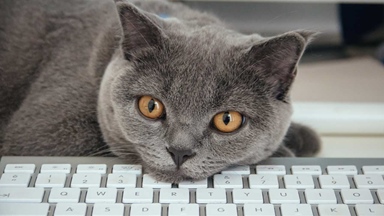Loading component...
At a glance
Dr Agustin Chevez, adjunct research fellow at Swinburne University’s Centre for Design Innovation knows a thing or two about boredom.
In 2018, Chevez set out on a journey from Melbourne to Sydney, not by plane, train or car – but on foot.
The 905-kilometre walk from Federation Square in Melbourne to the Sydney Opera House took him 42 days.
Chevez calls it a modern-day pilgrimage, with the goal of exploring the relationship between distraction, isolation and the incubation of ideas.
Two rules governed Chevez’s trip – he had to be alone, and he had to avoid distraction.
As he explains in his book, The Pilgrim’s Guide to the Workplace, this meant “no music or podcasts, no books or anything that might help to pass the time. This rule helped to ensure the pilgrimage remained focused and not a holiday”.
Three days into his experiment, Chevez hit a snag. “I was bored beyond belief,” he says.
As he resisted the temptation to give in to his craving for diversion, Chevez began to notice a change in his thinking.
For one, he became more attuned to his surroundings. At times, when passing through particularly picturesque countryside, he stopped thinking and became transfixed by the landscape.
Most of Chevez’s walk, however, was spent trudging along the roadside, with little to do but observe the passing cars and the patterns created by the gravel underfoot.
He often found himself in a meditative state, with the monotony provided by the unchanging roadside adding a new dimension to his thinking. “Boredom allowed me to reach a deeper level of insight,” he says.
This realisation led Chevez to an epiphany: “If well managed, boredom can be a beautiful thinking tool that allows us to see the world differently.”
How accountants can use creative thinking at work
What is boredom?
UK psychologist Dr Sandi Mann says boredom is the feeling experienced when the human brain’s search for neural stimulation goes unmet.
“Contrary to popular opinion, boredom is not the result of having nothing to do, but rather of having nothing to do that appeals at that time,” she writes in her book, The Science of Boredom: The Upside (and Downside) of Downtime.
While many people typically interpret boredom as a negative emotion, it can lead to positive outcomes.
“Boredom indicates that we need to make changes in our lives,” Mann says.
"If well managed, boredom can be a beautiful thinking tool that allows us to see the world differently."
“It stimulates curiosity – it leads us to change careers and jobs. Paradoxically, it is quite a stimulating emotion to have.”
However, too much boredom can become problematic. The desire for neural stimulation can result in unhealthy behaviours, such as excessive risk-taking or substance abuse.
“I have produced many studies that prove that we tend to eat more when we are bored.
“That is probably not a surprise, but we eat more unhealthy things because we are searching for that neural stimulation or that reward from a chemical like dopamine.
“We need the right level of boredom in our lives, that ‘sweet spot’ – not too little, not too much,” Mann explains.
Link to creativity

Boredom is often viewed with caution in a society preoccupied with productivity. When being busy is worn like a badge of honour, no one wants to admit to being bored.
A typical workday of back-to-back meetings and never-ending to-do lists allows for little downtime, but science has discovered a surprising link between boredom and creativity.
In a 2014 study, Mann and her student Rebekah Cadman asked participants to complete a boring activity – copying phone numbers out of the phone book – before undertaking a creative task – coming up with as many uses for two plastic cups as possible. The “boring” group outperformed the control group, who were only asked to complete the creative task.
“When we are bored, we become more creative,” says Mann. “If you are not able to satisfy the search for neural stimulation externally, then you tend to go off into your own mind and look for connections.”
This internal focus, or “daydreaming”, helps the mind to wander and engage in imaginative problem-solving, and it can help people to see the world through a different lens, says Mann.
Junk food for the mind
The smartphone has become the most obvious and easily accessible antidote to boredom.
While boredom signals the need for engagement, John Eastwood, associate professor at York University, questions whether a smartphone app is the place to find it.
While scrolling a social media feed provides neural stimulation, it does not provide the meaning humans crave. Instead, it creates a cycle of “mental disengagement”, says Eastwood in his book, Out of My Skull: The Psychology of Boredom.
“A key challenge for us, in the face of ever‑present distraction, is to resist the allure of quick and easy mental engagement – junk food for the mind – that will ultimately fail to satisfy and will cycle us back to being bored all over again,” Eastwood writes.
“Instead, we need to seek true antidotes to boredom that will satisfy our need to be mentally engaged.”
What organisations can do
Mann says organisations can benefit from a creativity boost by allowing more boredom into the workplace.
However, embracing boredom in the workplace does not mean painting the walls beige and banishing the office foosball table.
Instead, companies could build downtime into the workday by implementing shorter meeting times and encouraging staff to take regular breaks from their desks.
Some organisations have introduced an “anti-power hour”, an hour-long block where employees are not expected to be productive.
Timing is important when encouraging boredom at work. A strategy such as job rotation can prevent boredom when an employee, such as a train driver, needs to be alert, says Mann.
Chevez also encourages individuals to be more open to sitting with their boredom when the feeling arises, rather than reaching for a smartphone.
On the next commute to work, or when standing in a queue, “avoid the temptation to jump into TikTok or Instagram or Duolingo,” Chevez says, “and see what happens”.

